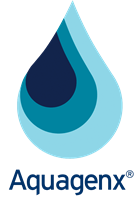Michigan State University Tests Well Water for E. coli in Rural Nicaragua and Compares Aquagenx CBT to IDEXX Colilert
 Michigan State University’s Water Quality, Environmental, and Molecular Microbiology Laboratory consists of two labs, one for general water quality testing and the second for environmental molecular microbiology assays. www.joanrose.fw.msu.edu
Michigan State University’s Water Quality, Environmental, and Molecular Microbiology Laboratory consists of two labs, one for general water quality testing and the second for environmental molecular microbiology assays. www.joanrose.fw.msu.edu
Challenge
Michigan State University’s Water Quality, Environmental, and Molecular Microbiology Laboratory (WQEMM) traveled to Pueblo Nuevo, Nicaragua to examine drinking well water quality and proximity to hazards and land use that might impair groundwater quality. Pueblo Nuevo is a small, remote village near the Rio Wawashang Reserve where access to a lab and other equipment was unavailable. Patricia Weiss, Research Assistant II for WQEMM, says “I was not able to put water samples on ice and take them back to the lodge or a lab, so a portable test that could be done onsite was essential.”
Solution
 Weiss and colleagues Tiong Gim Aw and Joan B. Rose took Aquagenx CBT Kits to Nicaragua where they traveled to 32 wells. Each well serves a range of 4-20 people and 1-4 families. They collected 100 mL samples from both simple and rope-pump wells and added the Aquagenx E. coli growth medium to the sample bottle. After the medium dissolved, they poured the sample into the plastic compartment bag and incubated the bag at ambient temperature for about 48 hours. During their testing in Nicaragua, WQEMM also compared the CBT to IDEXX Colilert.
Weiss and colleagues Tiong Gim Aw and Joan B. Rose took Aquagenx CBT Kits to Nicaragua where they traveled to 32 wells. Each well serves a range of 4-20 people and 1-4 families. They collected 100 mL samples from both simple and rope-pump wells and added the Aquagenx E. coli growth medium to the sample bottle. After the medium dissolved, they poured the sample into the plastic compartment bag and incubated the bag at ambient temperature for about 48 hours. During their testing in Nicaragua, WQEMM also compared the CBT to IDEXX Colilert.
Test Results
With the CBT, WQEMM quickly determined 87.5% of the wells were contaminated with E. coli bacteria. The CBT enabled flexibility in terms of time and dilutions; they sampled 40 wells in less than 10 days and completed multiple dilutions. Their results validated comparison of contamination levels between rope-pump wells and simple wells were consistent with “A Randomized Trial of the Impact of Rope-Pumps on Water Quality,” (Gorter et.al., 1995). WQEMM also obtained very similar results when comparing the CBT against IDEXX Colilert.
Conclusion
“The CBT is an innovative solution that made water quality testing in a remote, rural environment such as Pueblo Nuevo possible,” says Weiss. “I did not have access to a lab or materials typically necessary to complete water quality assessment, and the CBT was a quick and easy way to obtain accurate results in this setting.”
